- When will AI surpass Facebook and Twitter as the major sources of fake news? – May 23, 2023
- The evolution of aging – May 7, 2023
- The (new) telomere theory of aging – April 15, 2023
I suppose Mitteldorf wouldn’t really like my short description of his theory, that is, that aging is a feature of evolution and not a bug. The reason he is interested in aging is that death has terrified him since the age of three when his father disclosed to him that one day his life will also come to an end.
The book actually has two authors, Josh Mitteldorf and Dorion Sagan, although it is fair to say that this text is mainly Mitteldorf’s work. Sagan only contributed a prologue and was involved in the epilogue. I found Sagan’s contribution a bit disturbing, to say the least. (Update: Thanks to Josh’s comment (see below) I learned that I was wrong and that Josh himself wrote this part. I will come to this at the end of my post.
Conventional explanations of aging
Let’s first look at Mitteldorf’s theory. Mitteldorf’s view contradicts with Darwinism, or the mathematical formulation of Darwin’s theory called neo-Darwinism. This theory has a hard time explaining aging. If survival of the fittest is the main theme in evolution, why do most organisms have this major handicap that always leads to death? Aging does not really contribute to an organism’s fitness, so it seems.
Mitteldorf reviews three conventional theories that try to explain aging within the framework of neo-Darwinism (p. 72):
- Aging is beyond the reach of natural selection. No one in nature gets old enough for aging to matter at all. The body falls apart. That’s what happens when natural selection isn’t looking out for you.
- The genes that cause aging and the genes that increase fertility are actually the same genes, so that evolution has had to accept aging as a price paid for increased fertility.
- The body doesn’t have enough energy to do everything well, so it is forced to skimp on something. Aging is what results when the body compromises the infrastructure budget in order to boost this quarter’s bottom line (reproduction here and now).
Mitteldorf dedicates much of the rest of the text to debunk these three theories. Even though I couldn’t always follow his argumentation, I think this is the most interesting part of the book and makes it certainly worth reading.
He discusses one piece of evidence after another that makes these three theories and neo-Darwinism as a whole appear as unlikely candidates for explaining aging in the context of biological evolution. Even though Mitteldorf is an astrophysicist, he obviously has profound knowledge in the field of biology.
Mitteldorf’s explanation
All three theories have in common the premise that evolution is about survival of the fittest individual, and this is where all of these theories fail. Mitteldorf finds a different answer to the question why most species age (Kindle loc. 178):
The answer is that natural selection is not just the life and death of individuals but also the rise and collapse of local populations and of entire ecosystems. Evolution is about cooperation as well as selfishness, and aging has evolved as part of the dues owed by an individual for participating in a stable ecosystem. Evolution and ecology have inscribed a death sentence in our genes. We literally pay with our lives to protect ecosystems, as increased death rate via aging prevents the sort of wild overgrowth that presages wholesale population collapse.
They keyword here is “overgrowth.” He also uses terms such as overpopulation and overexploitation throughout the book. Here is another summary of Mitteldorf’s central thesis in his own words (p. 146):
There must be a benefit to aging. There must be a powerful something that more than compensates the negative of lost fitness for the individual. The benefit is certainly for the community and not the individual. And that benefit must involve some basic property of living things, since aging is found in so many diverse species. What is it?
My answer is that aging makes possible stable ecosystems by leveling out the death rate. Death at a predictable, programmed time prevents the tragedy of everyone dying at once—extinction in famines or epidemics. If evolution worked only at the level of individuals, it would be a dog-eat-dog world, rife with cannibalism and every form of vicious competition.
The most interesting example he gives is a discovery about yeast cells that Valter Longo made in the 1990s. This discovery almost ended the career of the young biologist because his finding appeared to contradict neo-Darwinism strongly. Yeast cells have the remarkable ability to detect food shortages in their environment. When this happens, they commit suicide via apoptosis (programmed cell death) to turn themselves into food for their neighbors. What is bad for the individual is good for the community. With the help of this sacrifice of 95% of the yeast cells, 5% of the microorganisms survive. Without this “altruistic” behavior, the entire population might have died out.
Other examples in the book are not as drastic, but at the core of Mitteldorf’s theory is the thesis that if a species overexploits its environment (for instance if a predator eradicates its prey), this species risks becoming extinct itself. Thus, individuals age to prevent overpopulation and overexploitation of resources. This constitutes a competitive advantage for the species. For instance, in case of a famine, the old are the first to die and the young survive to secure the future of the species.
Social Darwinism vs. Darwinist socialism
This brings me to my remark at the beginning of my blog post. In the prologue, Dorion Sagan draws an analogy to economic systems (Kindle loc. 148): Update: I wrongly assumed that Dorion Sagan wrote this part (see comment below).
There is a natural analogy between population cycles in ecology and the economic cycles of boom and bust that appear in the brand of capitalism embraced by America and the West.
In the wake of the 1929 economic collapse, the Roosevelt administration was able to pass a broad program of government oversight and regulation of business practices. There followed forty years of unprecedented growth and the rise of an American middle class, the first time in history that any economic system had supported a majority of its citizens in comfort and security. But in 1980 began the Reagan backlash, deregulation, and the return of unbridled economic competition. Capitalism became predatory, the middle class began to shrink, business cycles deepened, and a growing rift now separates a wealthy elite from the struggling majority. There have been three major stock market crashes in the thirty years since deregulation, each followed by painful unemployment and economic stagnation.
Without regulation, competition becomes destructive. The idea that stability and a broad prosperity can emerge from pure competition is thoroughly discredited in practice, but it is a useful myth for the 1 percent who profit mightily when there are no rules and no regulators.
Sagan uses Mitteldorf’s biological theory to lash out against capitalism. Whereas Mitteldorf tries to refute neo-Darwinism, Sagan attacks social Darwinism. Update (see comment below): Mitteldorf uses his biological theory to lash out against capitalism which has been defended by its supporters with social Darwinism.
Most people rightly reject social Darwinism nowadays. However, abusing a biological theory to justify one’s own ideology is, in my view, always a very bad idea. We could call Sagan’s application of Mitteldorf’s theory on economic systems “Darwinist socialism.” We could call Mitteldorf’s application of his theory on economic systems “Darwinist socialism.”
Mitteldorf talks about ecological systems that compete with each other in a Darwinist manner. The individual has to hold back for the greater good for the community, so that the species or the ecological system has a competitive advantage. I don’t know which is worse, social Darwinism or Darwinist socialism. Altruism can be a good thing, but I wouldn’t want to turn myself into food for my neighbors in case of a famine. Would you?
Conclusion
Whatever your own political or ideological prejudices are, I recommend reading Mitteldorf’s book. His arguments for group selection are strong. I mean, groups (herds, species, ecosystems) exist, so how else can we explain their specific traits if not by group selection?
However, I don’t really find Mitteldorf’s conclusion convincing. He claims that aging is a form of altruism that helps the group compete with rival groups. His theory might work well for some species and ecosystems (for instance, where a predator mainly feeds on one type of prey). But in more complex environments where different species can exploit a variety of resources, things are probably a bit more complicated. To be fair, Mitteldorf acknowledges that both group and individual selection drive evolution. The question remains as to which kind of selection is the dominant one.
Nevertheless, I agree that aging must be an important feature of evolution. My guess is that it has something do with innovation, that is, the introduction of new abilities in species. Innovation requires removal of old components from the system. Organisms that already had the chance to reproduce should no longer contribute their “outdated” gene combinations. This would slow down the evolution of their species and therefore constitutes a competitive disadvantage in the long run.
In a way, organisms represent theories about their environment. Similarly, it is important that aging scientists fall out of the scientific community because they often have a hard time in accepting new, revolutionary theories. They thus slow down scientific progress by influencing new generations with their outdated theoretical views. Organisms with their “theories,” written in the four-letter alphabet of genetic bases, have to be replaced to give their offspring a chance to test new “gene-based theories.”
Having said that, nature has no interest in stabilizing ecosystems in the long run. Stable ecosystems only exist for a very short period of time. What we as humans with our incredible short lifespans perceive as stable periods are only blips on nature’s time scale.
Evolution is all about change and not preservation. Innovation inevitably brings disruption and not stability. Earth’s immense variety of life forms with amazing sophistication is not the result of mere reproduction with occasional mutations in peaceful, altruistic ecological communities.
Technological evolution just continues with this strategy (at a much faster pace) that has worked so well for biological evolution for more than four billion years. Weeding out the antiquated must be a central component of every system tuned for change and innovation. Aging is just one of nature’s answers to cope with this problem.
Nevertheless, the evidence that Mitteldorf presents makes a strong case for his main thesis that aging must be a programmed feature in organisms.
If Mitteldorf is right, then attempts to cure aging just by finding ways to repair accumulated damage are moving in the wrong direction. If aging is a feature of evolution and not a bug, then repairing the effects of this feature is not the cure. To abolish aging, we must reprogram the feature. Whether this will eventually lead to overexploitation of the planet is yet another question.

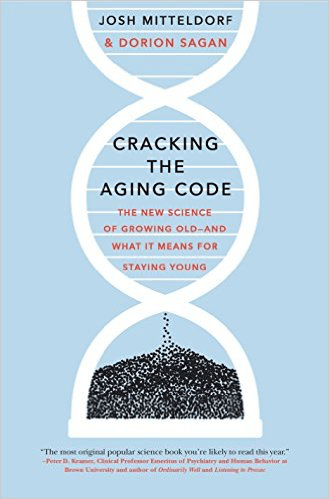
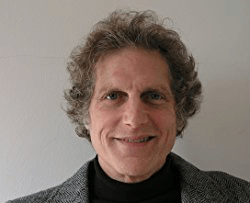
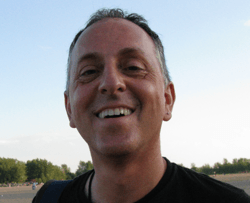
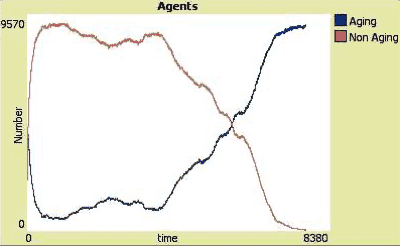
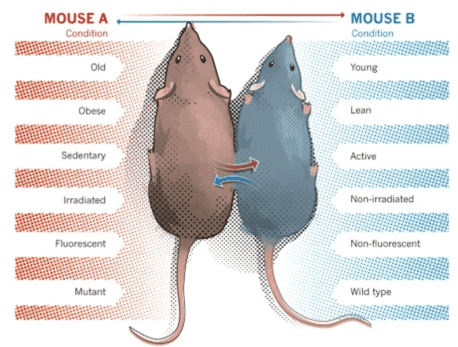
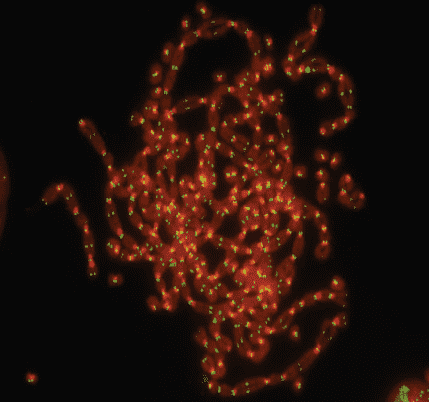

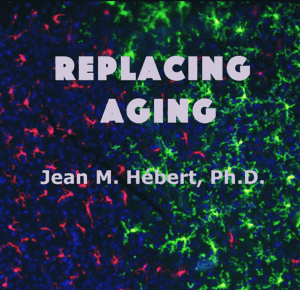

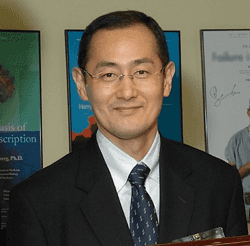

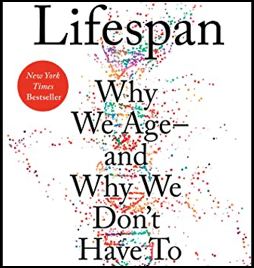




Thank you for your thoughtful review, Michael. It’s clear to me that you’ve absorbed the book’s message and content, and these have stimulated your own creative thinking on the subjects. This is the best an author can wish for, and it’s gratifying for me to see that you have let the book touch you.
I won’t detract from anything you’ve said here, but I’d like to clarify 3 points about where I stand, for your readers’ sake:
1) The logic of the book begins with the failure of current theories of aging. Of this I feel quite confident. I then go on to show that no theory based in individual fitness alone can explain all the data. There is overwhelming evidence that natural selection could get rid of aging, but didn’t. I like your statement of this, “It’s a feature – not a bug.”
Only after establishing this do I go on to speculate on a new theory of aging based in population dynamics. Of course, I like my own theory, but I’m not sure that it is right. Logically, it is dependent on the conclusion that “aging is a feature, not a bug” – and not the other way around. Observations comes first, theory must bow to observation. That’s the right way to do science.
2) For the programmers and modelers among us (yes, I’m a programmer) I recommend trying to build an ecosystem out of individuals of different species, each of which is trying to grow and reproduce as fast as possible. I predict you’ll find what I found – that you get dramatic winners and losers, exponential expansion and exponential collapse. What you don’t get is any semblance of stability. This insight was a primary driver for me in coming up with my population dynamic theory. For years, I had worked with the standard perspective that individual reproductive fitness is the dominant driver of natural selection. When I realized that every living organism is dependent on an ecosystem, and that ecosystems blow up if everyone is being maximally selfish–that was the “aha” moment for me.
3) You’ve guessed wrong about what parts of the book are Dorion’s. I’m a socialist/anarchist in the tradition of Bertrand Russell. I also identify as a libertarian, but I think that the damage done by predatory capitalism and the free-fall collapse of the world’s ecosystems imply that we will all have to sacrifice some of our liberty; in particular, our liberty to consume and to reproduce cannot be absolute. I stand behind everything in the book, with the exception of Dorion’s introduction, to which he signed his name alone.
– JJM
Josh, thanks a lot for the reply. I am honored! I corrected the part about Dorion in the text. I somehow confused the preface with the prologue.
As I outlined in my post, I very much agree with the beginning of your book and your refutation of conventional theories of aging. After reading your text, all of these explanations suddenly appeared far-fetched to me. I also think that more and more evidence shows the process of aging is genetically determined.
I only know a little about political theory, but I think socialism and anarchism don’t really harmonize well. As you mentioned in your book, capitalism favors deregulation. Socialism, on the other hand, very much requires regulation because you need many rules to determine how to redistribute resources. Anarchists don’t really like rules that much. You could say Russell’s political theory has been empirically falsified because in reality, all socialist movements ended in authoritarian systems that are very much the opposite of anarchism.
And if I remember right, Russell’s mathematical theory has been falsified as well (in this case, logically by Gödel). Maybe Russell was a bit too idealistic in his early years. The world is not as simple as we want it to be. And just as you can’t lay a foundation of mathematics with a few axioms, I doubt that it is possible to describe entire biological ecosystems accurately with a few equations. That would be my main criticism of neo-Darwinism.
This is the reason why I am skeptical about running computer simulations about biological systems. I know that this method works well in astrophysics and cosmology. However, the difference between physical and biological systems is that the latter are a few magnitudes more complex. Physical systems consist of only a few relatively simple objects, and exact laws and well-confirmed equations can describe their properties very well.
I can imagine that if you run a simulation of a biological system, you have to make a myriad of assumptions to make the system simple enough so that a computer will produce a result before the aging program in your own genes terminates. However, I do believe that your findings are correct, that is, you don’t get stability in systems where competition between individuals is a major driving factor.
And that is my main argument. There is no stability in nature. Species die out all the time, and new ecosystems continuously disrupt and are replaced by new ones. “Dramatic winners and losers” is exactly what we observe in nature. Thus, the question is not if particular components of the system are eradicated, but if the system as a whole would collapse, that is, whether life as such would be eradicated. To prove this, you would have to run a computer simulation of the planet Earth with all its species, and I am afraid this won’t be possible any time soon.
But who knows, maybe there is another way to confirm your theory. If humanity defeats aging, we can’t rule out that the whole system would indeed collapse. Humans are already dramatic winners and no other species in the history of the planet has eradicated as many species as we have. According to your theory, aging averts overexploitation of ecosystems. Hence, if we really do find a cure to aging, this last biological dam will break, and the ecosystem Earth must collapse.
However, I am a technological optimist in the tradition of Ray Kurzweil. Thus, I do hope your theory will not be confirmed in this way. 😉
I agree with your skepticism of computer models. The fact that a model “works” doesn’t mean that it works in the same way that nature works.
For years, evolutionary theorists have looked at the evidence for programmed aging and said, “we know that evolution cannot work this way. No conceivable evolutionary process could produce programmed death, because death is the opposite of fitness.”
I offer my models just as a counter-example to “No conceivable evolutionary process…” I don’t claim the model proves that nature must work in this way.
…but it’s also true that I have tried a great many models to evolve aging, and I have always been struck at how robust are those based on population dynamics, and how fragile are all the others, if I can get them to work at all.
JJM
Yes, you have a point here. You can get insights with a computer model by only simulating a few properties. I also agree that aging contributes to the fitness of the species. They only thing where I have doubts is that overexploitation of resources is the crucial theme here.
It would be interesting to run a simulation where you vary the maximum age an individual can reach and measure the speed at which the species or the system evolves. I predict that you will get a maximum speed for a specific age. I also think you will get a maximum evolution speed for a specific number offspring an individual can have because this reduces the probability that properties that no longer contribute to the fitness continue to be inherited.
I mean, it is obvious that evolution is constantly increasing in speed, that is, the time differences where new species with new adaptive features appear are getting shorter and shorter. I very much liked the part about evolvability in your book. I think aging indeed improved evolvability. However, the benefit is not to prevent overexploitation; aging just helps to get rid of outdated features more efficiently in an ever faster changing environment.
Mitteldorf appears to have run into a dead end based on your report for the following reasons:
A behavior can become hardwired when it proves to confer a survival advantage. This is obvious in yeast and bees and becomes less obvious and more subtle the higher you go in the species cognitive pyramid.
Animals with shorter life spans can often adapt more quickly and therefore have a survival advantage over long lived animals when the environment changes rapidly due to multiple causes including but not limited to climate change and competition.
Life spans in the animal kingdom are driven by what works best for species survival. We could not have evolved to become modern homo sapiens if we had been limited to the lifespan of a mouse. On the other hand life span can very dramatically between a mouse and a bat as a result of the bats reduced rick of predation.
It sounds as if Mitteldorf’s scientific theories on evolution are being driven by his political views.
I am unsure where you disagree.
This is exactly Mitteldorf’s point. If the life span is too long, that is, if animals don’t age fast enough, the species becomes extinct because it depletes the resources of the ecosystem.
It doesn’t necessarily mean a species goes extinct it may just cause an decline in numbers until supply and demand come back into balance. For instance an increase in human live span where culture plays an important role has caused fertility rates to go negative in developed economies as a matter of choice. As human life span increases from where it is today fertility rates will likely drop further.
I don’t think that slower aging will decrease the numbers. Quite contrary! The main problem of a species where some members age too slow is that certain alleles will become too dominant in the species. That is, the genetic diversity decreases, putting the species at the risk of extinction. Imagine a wolf that significantly ages slower than the rest of the pack. This wolf will most likely become the alpha. If this wolf ages very slow or doesn’t age at all, all offspring in the pack will have very similar genomes after a certain time. If the pack then encounters a new deadly pathogen, the entire pack will be eradicated in no time. I believe the main function of aging is to increase genetic diversity.
I also don’t think that that the fertility rates in developed economies have anything to do with life spans. People don’t choose to have fewer kids just because they have a better life expectancy. There are a variety of socio economic reasons for lower fertility rates but they are all not directly linked to aging.
Michael, You are right that increasing life span in a by product of an improvement in the standard of living in developed economies. Sorry I didn’t make that clear. Together they influence fertility rates for socio economic reasons for which the list is long.